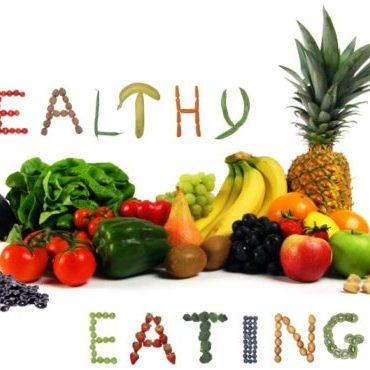 Our diet and exercise expert Arlene offers up her latest advice to our readers.
Our diet and exercise expert Arlene offers up her latest advice to our readers.
Can I have sugar in my tea if I have diabetes?
Yes. Eating sugar doesn’t cause diabetes and people with diabetes do not need to have a sugar-free diet. It’s okay to have foods like chocolate and cakes occasionally alongside a healthy diet. Remember sugary foods provide empty calories. So it depends on how often you drink tea, and how balanced the remainder of your diet is. If you have a well balanced nutritionally rich diet, the occasional cup of tea with a teaspoon of sugar will do no harm.
How can I control my appetite while on antidepressants?
Helping people successfully lose weight while on antidepressants (and preventing it in the first place) is often what I do in my practice. It’s such a common problem and I think everyone on antidepressants should know that it is possible to benefit from the medications AND maintain a healthy weight.
Antidepressants have wonderfully positive benefits not only in treating depression but increasingly are used also for a number of other conditions such as chronic pain like fibromyalgia, migraines, PMS, and even some urinary symptoms. The downside is that weight gain is an unwanted side effect associated with a majority of the antidepressants out there. And unfortunately, many people are completely unaware of potential weight gain when they start taking their medications – prescribing physicians seem to never mention it!
And how many of you, when the weight has crept on, have asked your doctor what’s going on and gotten no satisfying answers? Or wondered why all of a sudden you can’t stop eating chips, bagels, or ice cream?
Many antidepressants improve mood by making brain serotonin, a chemical that we all have in our brains, hang around longer between the nerve endings. Serotonin is a “feel good” natural chemical. It also is involved in controlling appetite. And for some reason that is not understood, antidepressants can make the appetite control effects of serotonin less effective. The result is that antidepressants can be associated with an out-of-control appetite and, eventually, weight gain.
For people on antidepressants, common weight-loss strategies like keeping a food journal, increasing exercise, or trying a low-carbohydrate/high protein diet are less effective than they are for people not on these medications. The reason is that these strategies do not address the fundamental problem: controlling appetite. The good news is that it is possible to naturally raise your brain serotonin by eating the right foods. And it’s often music to peoples’ ears that carbohydrates are the foods that allow your brain to make more serotonin which controls the appetite.
Won’t eating carbohydrates make me fat? Not if you choose low-fat carbohydrates in the correct quantities. You have probably experienced the effects of “comfort foods” in making you feel good and satisfying your appetite – grilled chicken and steamed broccoli, while delicious and healthy, are not the foods you reach for when you get food cravings or feel stressed. No, mashed potatoes, a bowl of oatmeal with brown sugar, pizza, or brownies are more like it! The problem with cutting out carbohydrates is that your appetite can get out of control. The problem with eating the wrong carbohydrates, like those loaded with fat or refined sugar, is they can make you feel sluggish and add unwanted calories.
Check with a dietitian first to guide your diet and monitor portions. But you can time your foods for maximum appetite-controlling effects. Levels of serotonin naturally decline by afternoon and evening So aim to eat carbohydrates like whole wheat pasta with vegetables for dinner and grab a raisin toast as a late afternoon snack, and stick to protein-packed breakfasts and lunches to keep you going during the day. Regular exercise is highly recommended.
Bottom line: on antidepressants, you can control your appetite and lose weight.
 How do I control my weight during menopause? What & how much exercise do I need to lose my 8kg of menopause weight. I’m lacking energy but now taking myself on a 10km circuit run try to run the 10km again, I have a 3-day workout program as well. It’s hasn’t shown results yet & I’m keeping my calorie count to about 1200 calories per day, eating lots of fresh fruit & veg & deleting all processed foods as well.
How do I control my weight during menopause? What & how much exercise do I need to lose my 8kg of menopause weight. I’m lacking energy but now taking myself on a 10km circuit run try to run the 10km again, I have a 3-day workout program as well. It’s hasn’t shown results yet & I’m keeping my calorie count to about 1200 calories per day, eating lots of fresh fruit & veg & deleting all processed foods as well.
The reason we gain weight is a matter of calories in vs. calories out – as in, there are more coming in than going out. What prompts this weight gain, however, is where the frustration comes in since, as some of my active clients say, the weight gain seems to come from nowhere. “I’m doing the same workouts and eating the same as always, yet I suddenly have this belly,” one client said.
Three things happen during and after menopause that, when put together, lead to weight gain:
· Increased calorie intake: Studies show that women eat more calories as oestrogen declines and we crave more fat and sugar and less nutritious, more satisfying foods than having protein and fibre.
· Decreased physical activity: Spontaneous physical activity also decreases, often without us even being aware of it. This may be compounded by some menopausal symptoms like fatigue, difficulty sleeping, depression and other mood changes.
· Decreased RMR: Experts suspect that declining oestrogen can decrease your resting metabolic rate (RMR) by 40-70 calories a day, calories that add up if you don’t compensate for them with diet and exercise.
It’s obvious that oestrogen plays an important role in weight management. It affects our appetites, how active we are and the foods we crave. The lack of it even changes how fat is distributed, depositing it around the belly which puts us at risk for heart disease and diabetes. There are other age-related issues that can make things worse: Loss of muscle and aerobic power as well as a decrease in the number of calories you burn during exercise. In Exercise, Weight Gain and Menopause, Wendy Kohrt states that a young, healthy woman can increase her energy expenditure by 8-10 calories per minute during exercise, while a middle-aged woman may only be able to increase it by 6-8 calories per minute. That means maintaining the same calorie burn may require more frequent and/or more intense exercise.
That doesn’t mean you’re doomed to gain weight!
Things You Can Do to Avoid Weight Gain
If you’re frustrated with changes in your body that seem to come from nowhere, there are things you can do about it. By creating more effective workouts and looking at other areas of your life that may be contributing to the problem, you can get your weight under control.
Add Intensity to your Cardio. How hard you work is directly related to how many calories you burn and raising the intensity can help you burn more without having to add time or frequency to your workouts. Here’s what you can do:
Try Interval Training.
Increase Your Frequency – Try adding another day of cardio. Even a brisk 20-minute walk is enough to boost your calorie burn. I suggest you exercise daily for at least an hour.
Increase Your Duration – Another option is to make your workouts longer. Try adding 5-10 minutes to one or more of your workouts to burn a few extra calories.
Make Friends With Strength Training – Of all you do, strength training is the most important for maintaining your strength, balance, muscle mass and weight as you get older. Studies show that older adults can increase resting metabolic rate and energy expenditure by adding resistance training. One study even shows that a combination of high-intensity cardio and strength training, along with a balanced diet, is the best way to reduce abdominal fat. Get the most out of strength training.
Focus on Small Changes. The weight gain that happens with menopause is often the result of small increases in calories that add up over time – eating a little more, moving a little less and, of course, a metabolism that’s a few calories less than it was. The good news is that small changes can also reverse these things, good news if you don’t want to overhaul your whole life.
Tweak your diet – focus on fruits, veggies and whole grains while minimizing saturated fat, processed sugar and high sodium foods.
Find substitutions – Check the calories of the foods you eat regularly, such as yogurt, cheese, cereal or bread and spend some time at the grocery store to find lower-calorie substitutes.
Eat smaller portions – Eat a little less cereal, a smaller piece of chicken, a smidge less olive oil when you’re sautéing the vegetables – these small changes can shave off calories here and there without making you feel deprived.
Be More Active – Spontaneous activity often declines during menopause because it’s hard to fight the fatigue that comes from lack of sleep, hot flashes, anxiety and depression. Exercise and daily movement can help fight these symptoms. Every little bit counts including household chores, a short walk around the office or neighbourhood, standing up as often as you can and just about anything that helps you avoid sitting for long periods of time.
Monitor Yourself – Keeping track of your daily habits, eating and exercise can help you stay on top of your weight and notice if extra calories are creeping in. This isn’t to micromanage every bite you eat or movement you make, but to be aware of what’s happening overall.
Some ways to monitor yourself: Keep a Food Journal – This is a good place to monitor your meals, snacks and calories, but also to keep track of your cravings and find ways to deal with them that won’t derail your diet; Keep a workout log – Tracking your exercises, weight, reps and sets can help you progress in your strength training workouts and make sure you’re really challenging yourself. Keep an Activity log – Tracking your movement (or lack thereof) on a regular basis can tell you how active you are and, more importantly, where you can improve. For example, do you sit more after lunch? That may be a good time to take a walk or do some light exercise to fight post-lunch fatigue. Wear a pedometer to measure your steps is a great motivator. Keep a Health Journal – This is where you can track sleep patterns, menopause symptoms, how you’re feeling and the tools you’re trying to manage your symptoms. You’ll see how those tools are working or if you need to try another approach. Talk to your doctor – There may be medications or other treatments available that can help.
Going through menopause doesn’t mean automatic weight gain, nor does it mean your body won’t go through some changes no matter what you do. Try to work with what’s within your control: How much you move, what you eat, how you handle stress and the efforts you make to handle menopause symptoms the best way you can. Managing what you can and allowing your body to respond to your efforts can help you keep a healthy, positive attitude about the changes you’re going through.
 What is the daily required calcium and iron when you are pregnant?
What is the daily required calcium and iron when you are pregnant?
Pregnant women need more protein, iron, folate and iodine but only a small increase in energy (kilojoules). Folic acid supplements before and after conception can reduce the risk of neural tube defects such as spina bifida. Small regular snacks may help with nausea or morning sickness. Drinking alcohol during pregnancy may affect your unborn baby.
Pregnancy increases the need for iron in the diet. The developing foetus draws iron from the mother to last it through the first five or six months after birth so a woman has an increased need for iron during pregnancy. Iron losses are reduced during pregnancy because the woman is no longer menstruating and so loses less iron from menstrual blood loss. It is useful to include foods that are good sources of iron in the diet every day (for example, red meat) and to have foods that are good sources of vitamin C (like oranges) to help absorb the iron. The recommended daily intake (RDI) of iron during pregnancy is 27mg a day (9mg a day more than that for non-pregnant women). The amount needed depends on the amount of iron the woman has ‘stored’ in her body prior to pregnancy. If your iron stores are very low, you may need to get more from supplements. It is important to discuss your need for supplements with your doctor as iron can be toxic (poisonous) in large amounts.
There is no need for extra calcium during pregnancy. Until 2006, Australian dietary recommendations advised increased calcium intake during pregnancy and breastfeeding. This advice has since been revised. Although there is a large ‘shift’ of calcium to the baby during the third trimester of pregnancy (as it starts to develop and strengthen its bones), the mother’s increased capacity to absorb dietary calcium makes up for this loss without the need for extra intake. The recommended dietary intake for non-pregnant women (1,000mg a day for women aged 19–50 years and 1,300mg a day for adolescents or those aged over 51) remains unchanged during pregnancy and breastfeeding. Dairy foods (such as milk, cheese and yoghurt) and calcium-fortified soymilk are excellent dietary sources of calcium.
 Can I drink fruit juice if I have diabetes?
Can I drink fruit juice if I have diabetes?
Don’t forget that what you drink can also affect your weight and blood glucose!
It is recommended to choose zero-calorie or very-low-calorie drinks. This includes:
Water, Unsweetened teas, Coffee, Diet soda, Other low-calorie drinks and drink mixes.
You can also try flavouring your water with a squeeze of lemon or lime juice for a light, refreshing drink with some flavour. All of these drinks provide minimal calories and carbohydrates.
You should avoid sugary drinks like regular soft drinks, fruit juice, energy drinks, sweet tea, and other sugary drinks. These will raise blood glucose and can provide several hundred calories in just one serving! A regular 400ml can of soft drink has about 150 calories and 40 grams of carbohydrate. This is the same amount of carbohydrate in 10 teaspoons of sugar! One cup of fruit juice has over 100 calories and 30 grams of carbohydrates. Water is your best option but often we get tired of water. There are other options. Most diet drinks (like diet soda or diet tea) have zero grams of carbohydrate per serving, so they will not raise blood glucose. Diet drinks are sweetened with artificial sweeteners instead of added sugars. Removing the added sugars and replacing them with artificial sweeteners removes most of the calories and carbohydrates. One good thing about low-calorie drinks and drink mixes is that they are available in several flavours. They may be a good alternative to regular water or juice.
100% juice with no sugar added is a healthy drink choice. It does provide calories and carbohydrates, but they also provide important vitamins and minerals. Just remember to control portion size when you drink them, because the calories and carbohydrates can add up when you have too much. If you choose to drink juice, be sure the label says it is 100% juice with no sugar added. Juice provides a lot of carbohydrates in a small portion, so be sure to count it in your meal plan. Usually, 120ml – 180ml (not even a full cup!) contains 15 grams of carbohydrate If you like to have juice in the morning but don’t want the carbohydrate from fruit juice, try a vegetable juice. At just 50 calories and 10 grams of carbohydrate in 1 cup, it is a great alternative. I prefer you to eat the fruit and benefit from the fibre than have the fruit juice which is concentrated sugar and calories.

